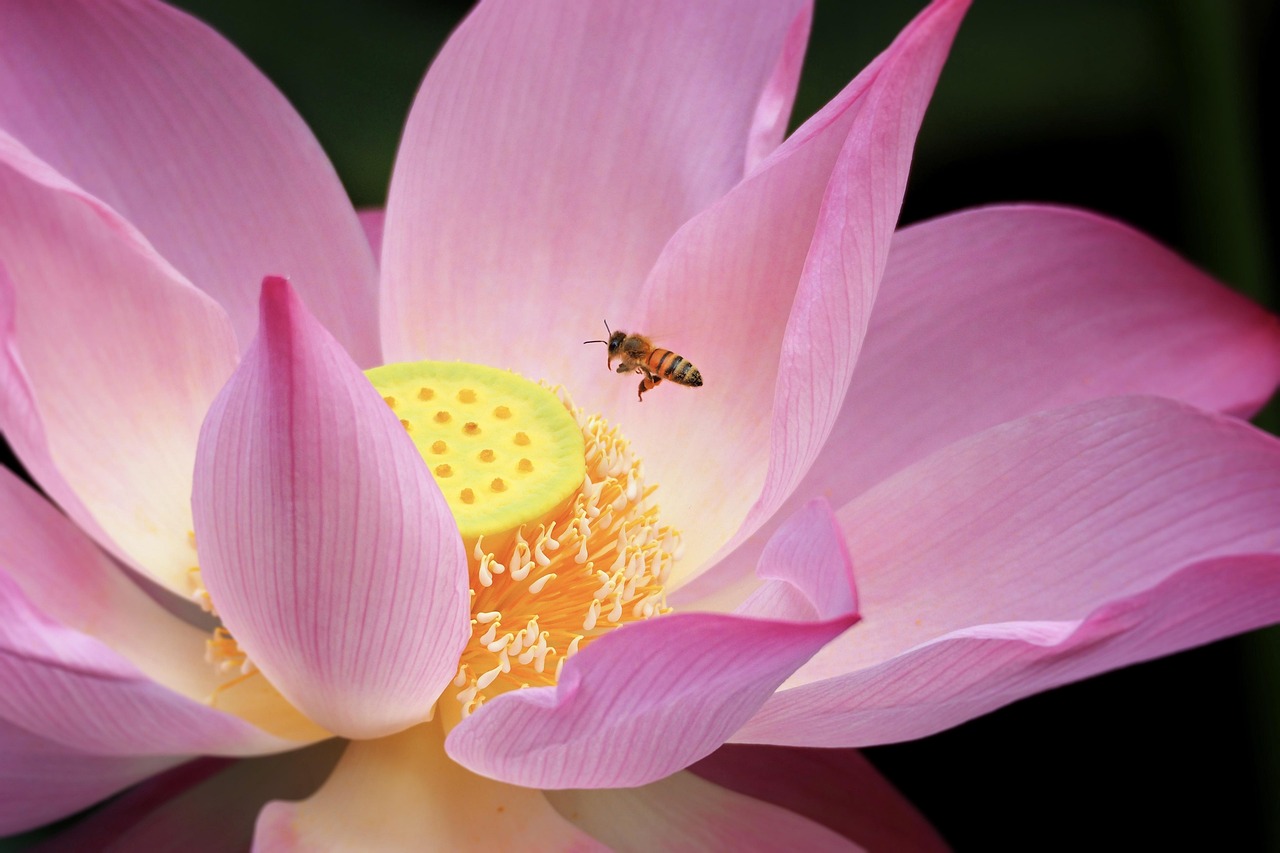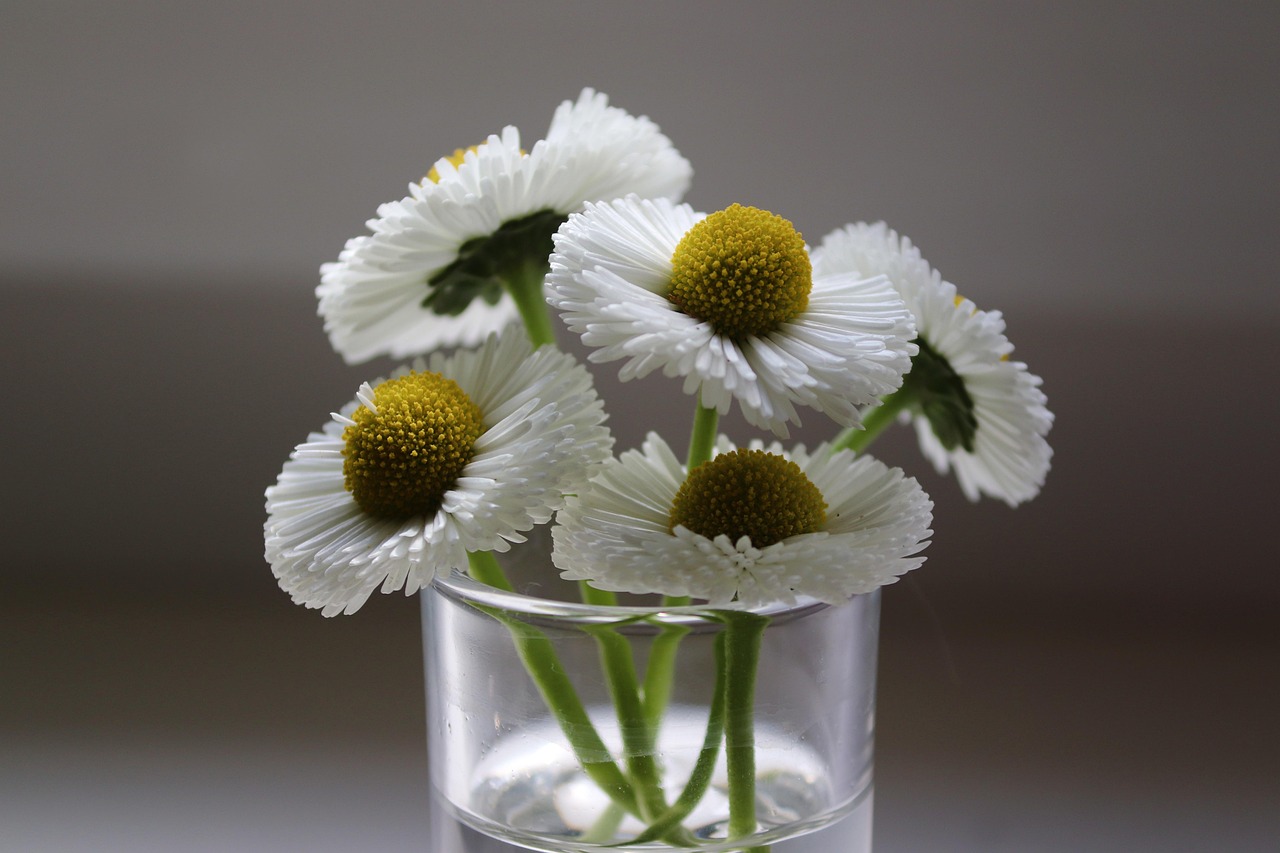Bee-attracting plants are vital for creating pollinator-friendly gardens. Some top picks include lavender, sunflowers, coneflowers, and asters. These plants not only provide essential nectar and pollen but also enhance the beauty of your garden, supporting local bee populations and promoting biodiversity.
Understanding the Importance of Bee-Attracting Plants

Pollinators, particularly bees, play a crucial role in the ecosystem. They are responsible for the pollination of many flowering plants, including numerous crops that humans rely on for food. Without these pollinators, our gardens and agricultural systems would struggle to thrive. However, bee populations are declining due to habitat loss, pesticides, and climate change. One effective way to support these vital creatures is by incorporating bee-attracting plants into our gardens.
Choosing the right plants can significantly impact the health of bee populations. Different species of bees are attracted to various flowers, depending on their shape, color, and scent. Therefore, it is essential to select a diverse array of plants that bloom at different times throughout the growing season. This ensures that bees have reliable food sources from early spring until late fall.
Key Factors to Consider When Selecting Bee-Attracting Plants
When planning a pollinator-friendly garden, consider the following factors:
- Diversity of Plant Species: Include a mix of native and non-native plants to attract various bee species.
- Flower Shape and Size: Flowers with open shapes are more accessible to bees. Tubular flowers may attract specific bee species.
- Blooming Period: Choose plants that flower at different times to provide continuous food sources.
- Pesticide Use: Avoid using harmful pesticides that can harm bees. Opt for organic gardening practices whenever possible.
Top Picks for Bee-Attracting Plants
There are numerous plants that can help attract bees to your garden. Below are some of the top picks known for their appeal to pollinators:
| Plant Name | Bloom Time | Benefits |
|---|---|---|
| Lavender | Summer | Highly fragrant; attracts many bee species. |
| Sunflowers | Summer to Fall | Large blooms; provides ample pollen. |
| Coneflowers (Echinacea) | Summer to Fall | Drought-tolerant; attracts various pollinators. |
| Asters | Late Summer to Fall | Provides nectar late in the season. |
In addition to these popular choices, consider adding herbs like basil and mint, which also attract bees while being useful in the kitchen. Wildflowers are another excellent option as they often require less maintenance and provide habitats for various pollinators.
By incorporating a variety of bee-attracting plants into your garden, you contribute significantly to the health of local ecosystems. Planting these species not only supports bees but also enhances the beauty and productivity of your outdoor space.
Creating a Bee-Friendly Garden Environment
To maximize the benefits of bee-attracting plants, it is essential to create an overall environment that supports bees and other pollinators. This includes considering the layout of your garden, the types of companion plants you choose, and maintaining a healthy ecosystem.
Garden Layout and Design
When designing your garden, consider the following points to create a welcoming space for bees:
- Sun Exposure: Most bee-attracting plants thrive in sunny locations. Ensure your garden receives at least six hours of sunlight daily.
- Plant Grouping: Group plants in clusters rather than spacing them apart. This makes it easier for bees to find food sources.
- Nesting Sites: Provide natural habitats by leaving areas of bare soil or incorporating bee hotels, which offer nesting sites for solitary bees.
- Diverse Plant Heights: Incorporate plants of various heights. This diversity not only creates visual interest but also helps attract different bee species.
Companion Planting for Bees
Companion planting can enhance the attractiveness of your garden to bees. Certain plants have synergistic benefits, providing additional nutrients or repelling pests while also attracting pollinators. Here are some effective combinations:
- Basil and Tomatoes: Basil attracts bees and helps increase the yield of tomato plants.
- Marigolds and Cucumbers: Marigolds deter pests and provide nectar for bees while cucumbers flourish nearby.
- Cilantro and Peppers: Cilantro flowers attract various pollinators, benefiting nearby pepper plants.
Plants That Support Bees Beyond Nectar
While nectar is essential for bees, some plants offer additional benefits that enhance their well-being. These include:
Pollen-Rich Plants
Pollen is a vital protein source for bees. Selecting plants known for their high pollen content helps support bee populations. Some excellent choices include:
- Goldenrod: A late-summer bloomer that provides abundant pollen.
- Wildflowers: Many native wildflowers are rich in both nectar and pollen.
- Clovers: Low-growing clovers are great for lawns and attract a wide range of bees.
Herbs That Attract Bees
Many culinary herbs serve dual purposes: enhancing your meals and attracting bees. Consider planting these herbs in your garden:
- Basil: In addition to its culinary uses, basil attracts many pollinators when it flowers.
- Thyme: A low-growing herb that produces small flowers, attracting bees and other beneficial insects.
- Sage: Known for its aromatic leaves, sage blooms with spikes of flowers that are irresistible to bees.
The Role of Native Plants in Bee Habitats
Native plants are particularly important for supporting local bee populations. They have co-evolved with native pollinators, making them highly attractive and beneficial. Here are some reasons to prioritize native plants in your garden:
- Adaptability: Native plants are well-suited to local climate conditions and soil types, requiring less maintenance.
- Biodiversity Support: Native plants often attract a wider range of pollinators and other wildlife, promoting overall ecosystem health.
- Ecosystem Resilience: By planting natives, you contribute to the resilience of local ecosystems against invasive species and climate change.
Incorporating native plants into your garden not only benefits bees but also enhances the aesthetic appeal and sustainability of your outdoor space. By fostering a healthy environment, you can ensure that your garden becomes a thriving habitat for pollinators.

Seasonal Considerations for Planting

When planning a bee-friendly garden, it’s crucial to consider the seasonal aspects of planting. Different plants thrive in different seasons, and selecting a variety ensures that bees have access to food throughout the year. Below are some key points to keep in mind regarding seasonal planting.
Spring Planting
Spring is a vital time for bees as they emerge from hibernation. Early bloomers provide essential food sources. Consider planting:
- Crocus: One of the first flowers to bloom, crocuses provide nectar and pollen in early spring.
- Snowdrops: Another early bloomer, snowdrops are rich in nectar and attract early bees.
- Violets: These plants not only add color but also serve as a food source for various pollinators.
Summer Planting
Summer is peak season for bee activity. A variety of flowering plants will thrive during this time, ensuring a steady supply of nectar and pollen:
- Lavender: Known for its aromatic scent, lavender blooms in summer, attracting bees throughout the season.
- Black-eyed Susans: These striking flowers are not only beautiful but also provide abundant pollen.
- Bee Balm: This plant’s name says it all. It is particularly attractive to hummingbirds and many bee species.
Fall Planting
Fall is often overlooked, yet it is essential for sustaining bee populations as they prepare for winter. Some excellent fall-blooming plants include:
- Asters: Blooming late in the season, asters provide much-needed nectar for bees before winter.
- Goldenrod: A robust late-summer plant that offers both nectar and pollen, goldenrod is a favorite among many bee species.
- Chrysanthemums: These flowers bloom in the fall and are known to attract various pollinators.
Maintaining a Healthy Bee Habitat
A thriving bee habitat requires ongoing care and attention. Here are several strategies for maintaining an inviting environment for bees:
Water Sources
Bees need water just like any other living creature. Providing water sources can help sustain them, especially during dry spells. Consider the following:
- Shallow Dishes: Fill shallow dishes with pebbles or marbles and add water. This allows bees to land safely while drinking.
- Bird Baths: A bird bath can serve as a dual-purpose water source for both birds and bees.
- Puddling Areas: Create small puddles in your garden by slightly depressing the soil; this attracts thirsty bees.
Avoiding Pesticides
The use of pesticides can be harmful to bees and other beneficial insects. To maintain a healthy bee habitat, consider these alternatives:
- Natural Pest Control: Use beneficial insects such as ladybugs or lacewings to control pests naturally.
- Organic Treatments: If necessary, opt for organic pest control methods that are less toxic to bees.
- Cultural Practices: Rotate crops and encourage biodiversity to minimize pest issues without chemicals.
Monitoring Bee Activity
Observing bee activity in your garden can provide valuable insights into the health of your ecosystem. Consider keeping a journal to track:
- Types of Bees: Note which species visit your garden most frequently.
- Bloom Times: Record when different plants bloom to understand which are most beneficial.
- Pest Issues: Keep track of any pest problems or changes in bee behavior.
This information can guide your future planting decisions and help you create an even more inviting space for bees year after year.
The Educational Value of Bee Gardens
A bee-friendly garden serves not only as a habitat but also as an educational tool. Engaging children and adults alike can foster a greater appreciation of pollinators. Here are ways you can educate others:
- Workshops: Host gardening workshops focused on creating pollinator-friendly habitats.
- School Programs: Collaborate with local schools to teach students about bees and their importance in our ecosystem.
- Community Events: Organize community events or open garden days to showcase the beauty and importance of bee-attracting plants.
By fostering awareness and appreciation for bees, we can collectively work towards enhancing their populations and supporting biodiversity in our communities.
Challenges Facing Bee Populations

Despite the importance of bees and the efforts to create friendly habitats, several challenges continue to threaten their populations. Awareness of these issues can help gardeners and communities take proactive steps to mitigate their impact.
Pesticide Use
The use of chemical pesticides remains one of the most significant threats to bee health. Many commonly used pesticides are harmful to bees, leading to disorientation, weakened immune systems, and even death. Understanding the effects of these chemicals is essential:
- Neonicotinoids: This class of pesticides has been linked to bee population declines and should be avoided in any pollinator-friendly garden.
- Timing of Application: If pesticides must be used, apply them in the evening when bees are less active, and choose targeted treatments over broad-spectrum options.
Habitat Loss
Urbanization, agriculture, and land development have led to significant habitat loss for bees. As natural habitats are replaced by concrete and monocultures, bees lose their food sources and nesting sites. Here are some ways to combat habitat loss:
- Support Local Initiatives: Participate in or support conservation programs aimed at preserving natural habitats.
- Create Pollinator Corridors: Encourage local governments to plant pollinator-friendly species along roadsides and in public spaces.
Climate Change
Climate change affects flowering times and the availability of food for bees. Shifts in temperature and weather patterns may disrupt the synchronization between flowering plants and bee activity. To adapt to these changes:
- Diverse Planting: Incorporate a wide variety of plants that bloom at different times to ensure food availability throughout the growing season.
- Water Conservation: Implement water-saving measures to maintain healthy plant growth during droughts.
The Role of Community in Supporting Bees
Communities play a vital role in supporting bee populations. Collective efforts can lead to more effective solutions and a greater impact on local ecosystems. Here are some community-based initiatives that can make a difference:
- Community Gardens: Establish community gardens that focus on pollinator-friendly plants, fostering collaboration among residents while providing habitats for bees.
- Local Pollinator Programs: Work with local environmental organizations to create educational programs that raise awareness about bee conservation.
- Plant Swaps: Organize plant swaps to encourage the sharing of native and bee-attracting plants among community members.
Final Thoughts
Creating a bee-attracting garden is not just about planting flowers; it is an ongoing commitment to fostering a healthy ecosystem. By understanding the needs of bees and addressing the challenges they face, we can cultivate gardens that support these essential pollinators. Incorporating a variety of native plants, ensuring diverse blooming times, and maintaining a chemical-free environment are crucial steps in this process.
In addition to enhancing our gardens, we have the opportunity to educate others and inspire community involvement. By sharing knowledge about the importance of bees and engaging with local initiatives, we can work together to protect these vital creatures. Ultimately, our efforts will lead to thriving ecosystems that benefit not only bees but all living organisms within our environment.
Every small action counts, whether it’s planting a single bee-friendly flower or participating in larger conservation efforts. Together, we can create landscapes filled with buzzing life, ensuring that future generations will enjoy the beauty and benefits of pollinators in our gardens.
